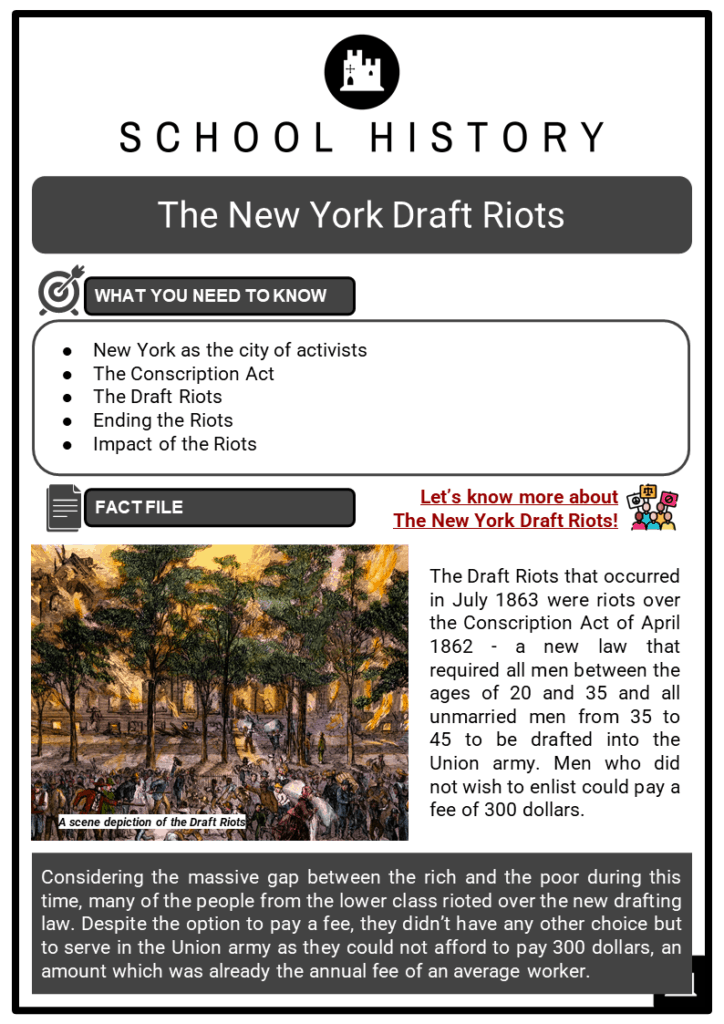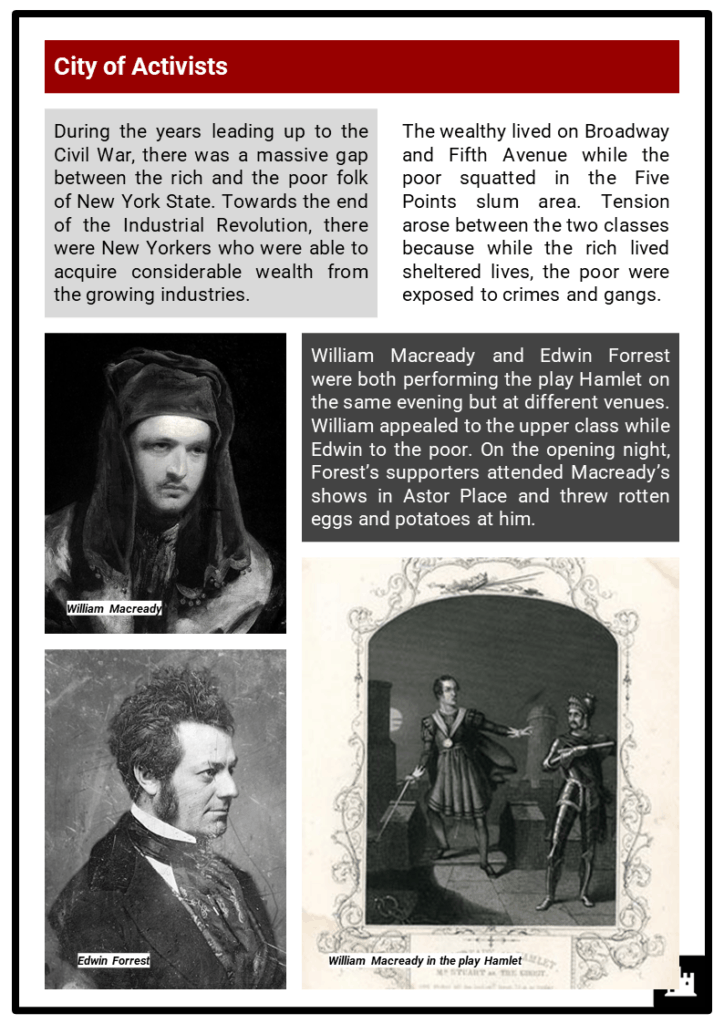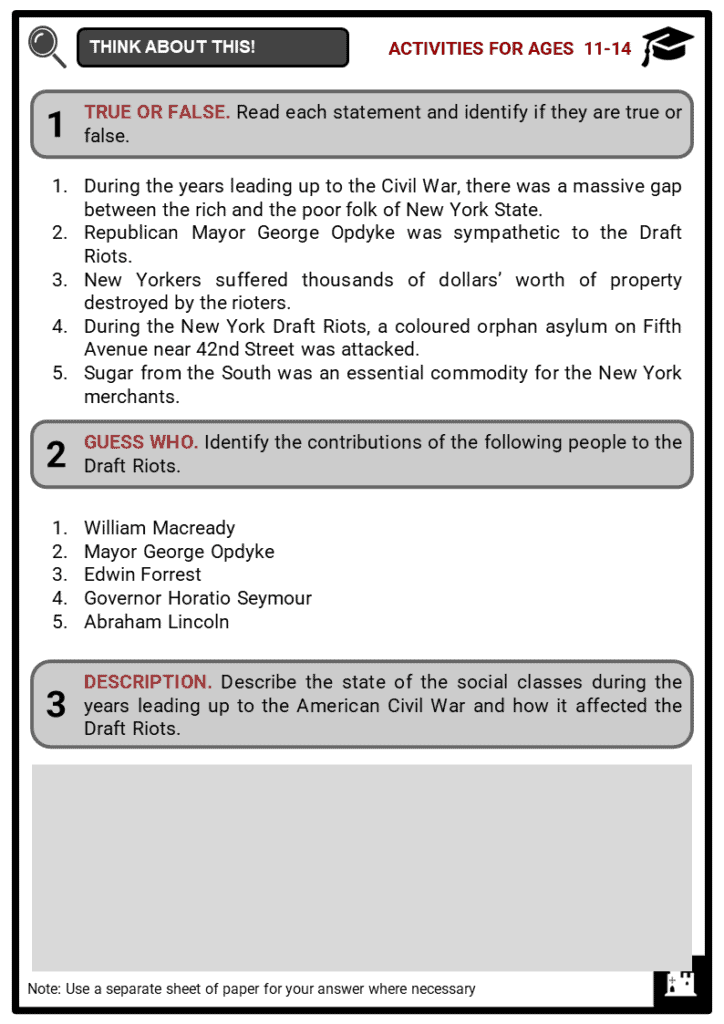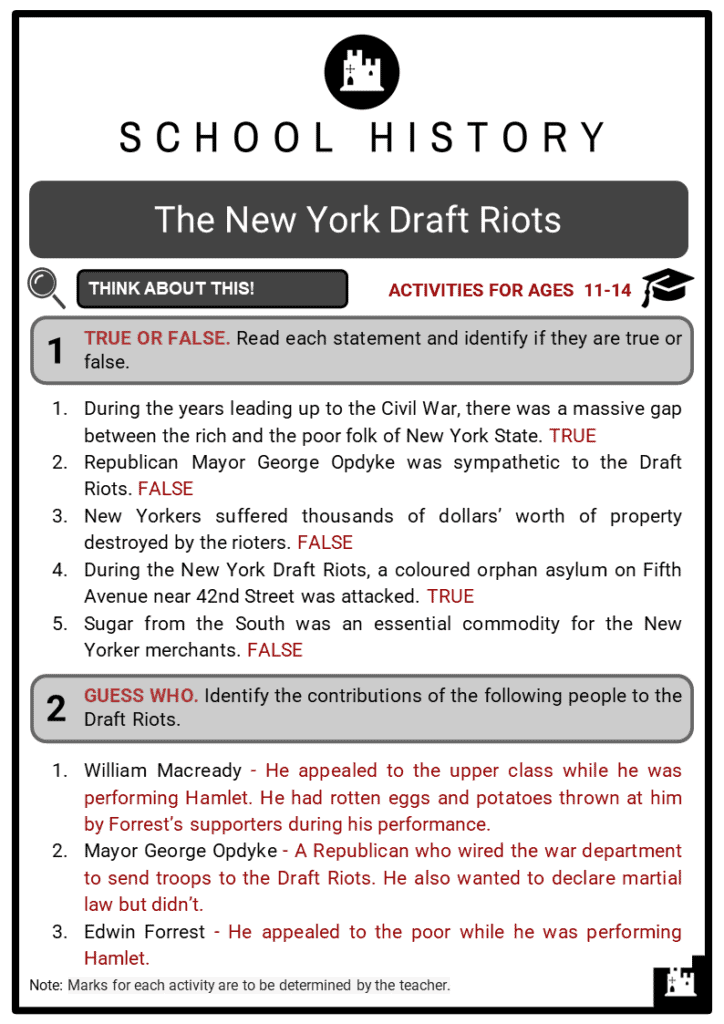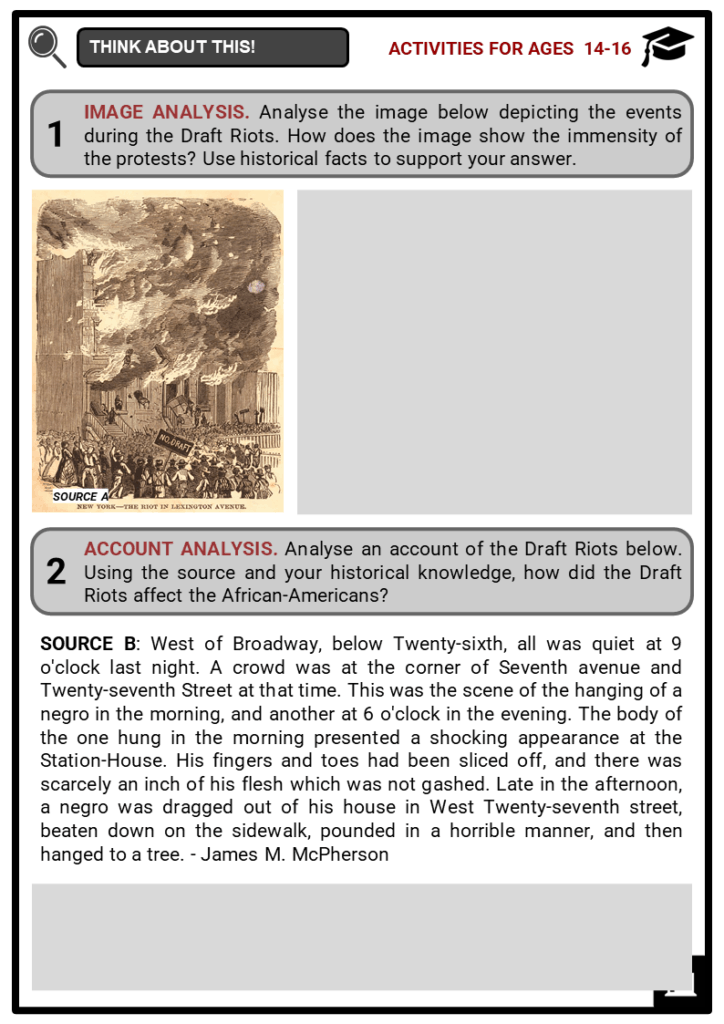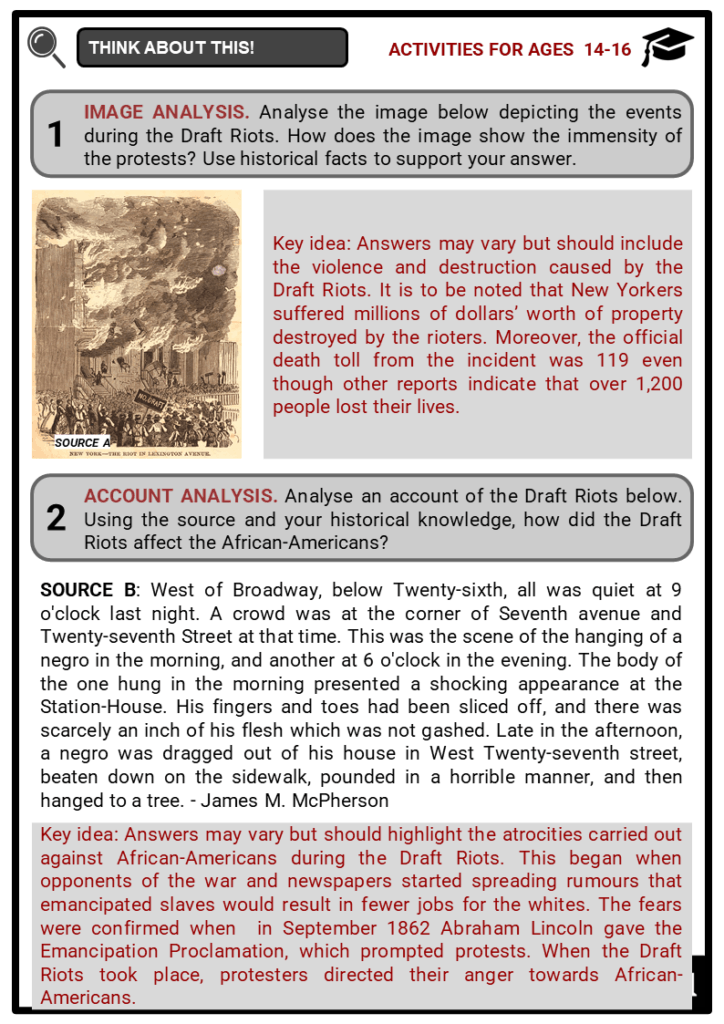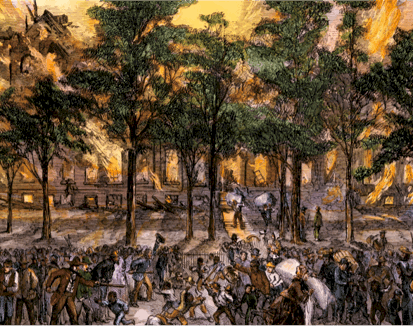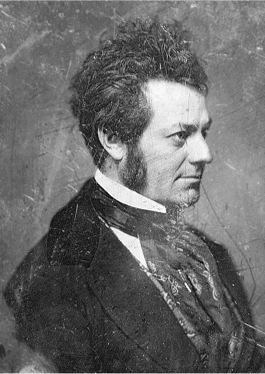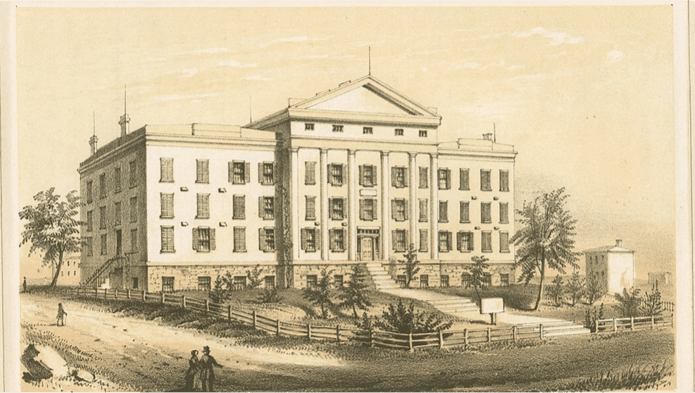Download The New York Draft Riots Worksheets
Do you want to save dozens of hours in time? Get your evenings and weekends back? Be able to teach The New York Draft Riots to your students?
Our worksheet bundle includes a fact file and printable worksheets and student activities. Perfect for both the classroom and homeschooling!
Table of Contents
Add a header to begin generating the table of contents
Summary
- New York as the city of activists
- The Conscription Act
- The Draft Riots
- Ending the Riots
- Impact of the Riots
Key Facts And Information
Let’s know more about The New York Draft Riots!
- The Draft Riots that occurred in July 1863 were riots over the Conscription Act of April 1862 - a new law that required all men between the ages of 20 and 35 and all unmarried men from 35 to 45 to be drafted into the Union army. Men who did not wish to enlist could pay a fee of 300 dollars.
- Considering the massive gap between the rich and the poor during this time, many of the people from the lower class rioted over the new drafting law. Despite the option to pay a fee, they didn’t have any other choice but to serve in the Union army as they could not afford to pay 300 dollars, an amount which was already the annual fee of an average worker.
City of Activists
- During the years leading up to the Civil War, there was a massive gap between the rich and the poor folk of New York State. Towards the end of the Industrial Revolution, there were New Yorkers who were able to acquire considerable wealth from the growing industries.
- The wealthy lived on Broadway and Fifth Avenue while the poor squatted in the Five Points slum area. Tension arose between the two classes because while the rich lived sheltered lives, the poor were exposed to crimes and gangs.
- William Macready and Edwin Forrest were both performing the play Hamlet on the same evening but at different venues. William appealed to the upper class while Edwin to the poor. On the opening night, Forest’s supporters attended Macready’s shows in Astor Place and threw rotten eggs and potatoes at him.
The Conscription Act
- The New York and Confederate states had a convergence of business interests as far as trade and slave trade were concerned. Immediately after the Civil War broke out, New York considered seceding from the Union.
- Cotton from the South was an essential commodity for the New York merchants. It represented 40% of the cargo shipped from the port of New York. Immediately after the slave trade was banned, the port thrived on illicit slave trade, helping the Southerners acquire slaves.
- Opponents of the war and newspapers started spreading rumours that emancipated slaves would result in fewer jobs for the whites, mostly the German and Irish immigrants. The fears were confirmed when in September 1862 Abraham Lincoln gave the Emancipation Proclamation which prompted protests.
- The tension was heightened when the Union, striving to get more men to enlist for the war, passed the Conscription Act in April 1862. According to the act, all male between the ages of 25 and 35 and unmarried men between the ages of 35 and 45, were required to enlist in the Union army.
- The law, however, had an exception for those who were able to pay $300, which was equivalent to an annual salary of the average worker at the time. This meant that only the rich could substitute their service for pay. Furthermore, African-Americans couldn’t enlist because they were not American citizens yet.
The Draft Riots
- In protest at the Conscription Act, riots ensued in New York, Detroit and Boston, though the New York riots were the most destructive. The anti-war protagonists went about their propaganda, heightening tensions about the law in the days leading up to the first draft wheel lottery on 11 July 1863. After the wheel lottery, Irish immigrants and other whites violently attacked the city’s military, government buildings, and anyone who tried to stop them.
- In the following days, African-Americans became targets of their anger. A coloured orphan asylum on Fifth Avenue near 42nd Street was attacked and the orphanage razed to the ground. The attackers stopped short of attacking the children who were relocated to a safer orphanage while they waited for the riots to stop.
- The protestors raided the orphanage, taking food, clothing and other valuables. Women married to black men and abolitionists were also attacked, and their properties destroyed. African-American men suffered unbridled brutality from the protesters. Many were beaten to death, and many more were lynched.
Ending the Riots
- Governor Horatio Seymour, a Democrat, was sympathetic to the riots, and so it was Republican Mayor George Opdyke who wired the war department to send troops. He wanted to declare martial law but didn’t. By 15 July, protests had reached Brooklyn and Staten Islands. Later on, 4,000 troops arrived from the Battle of Gettysburg and neutralised the protestors and restored order.
Impact of the Riots
- New Yorkers suffered millions of dollars’ worth of property destroyed by the rioters. The official death toll from the incident was 119 even though other reports indicate that over 1,200 people lost their lives. Furthermore, over 3,000 African-Americans were rendered homeless.
- The Colored Orphan Asylum attempted to rebuild on Fifth Avenue but relocated north to a sparsely settled area, in what came to be known as Harlem, due to continued threats of violence. Abolitionists revived the rigour and a year after the riots, the first all-black volunteer regiment of the Union army marched across the city to board their ship to the Hudson River.
Image sources:

